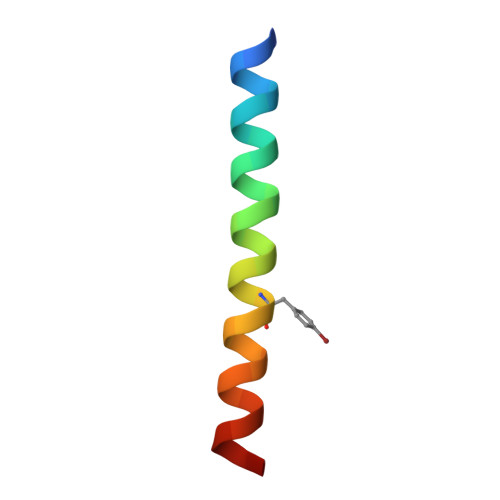Coiled coils 9-to-5: rational de novo design of alpha-helical barrels with tunable oligomeric states.
Dawson, W.M., Martin, F.J.O., Rhys, G.G., Shelley, K.L., Brady, R.L., Woolfson, D.N.(2021) Chem Sci 12: 6923-6928
- PubMed: 34745518
- DOI: https://doi.org/10.1039/d1sc00460c
- Primary Citation of Related Structures:
7A1T, 7BAS, 7BAT, 7BAU, 7BAV, 7BAW, 7BIM - PubMed Abstract:
The rational design of linear peptides that assemble controllably and predictably in water is challenging. Short sequences must encode unique target structures and avoid alternative states. However, the non-covalent forces that stabilize and discriminate between states are weak. Nonetheless, for α-helical coiled-coil assemblies considerable progress has been made in rational de novo design. In these, sequence repeats of nominally hydrophobic ( h ) and polar ( p ) residues, hpphppp , direct the assembly of amphipathic helices into dimeric to tetrameric bundles. Expanding this pattern to hpphhph can produce larger α-helical barrels. Here, we show that pentameric to nonameric barrels are accessed by varying the residue at one of the h sites. In peptides with four L/I-K-E-I-A-x-Z repeats, decreasing the size of Z from threonine to serine to alanine to glycine gives progressively larger oligomers. X-ray crystal structures of the resulting α-helical barrels rationalize this: side chains at Z point directly into the helical interfaces, and smaller residues allow closer helix contacts and larger assemblies.
- School of Chemistry, University of Bristol Cantock's Close Bristol BS8 1TS UK w.dawson@bristol.ac.uk d.n.woolfson@bristol.ac.uk.
Organizational Affiliation:




















